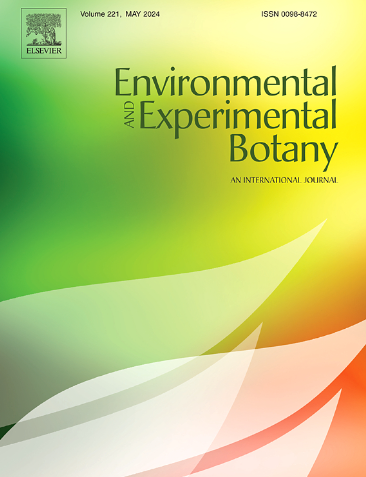解读低温胁迫对小麦长期生长的潜在限制:来自叶片功能性状、解剖基础、资源效率和生化能力的见解
IF 4.7
2区 生物学
Q2 ENVIRONMENTAL SCIENCES
引用次数: 0
摘要
低温事件可导致小麦持续的生长限制,影响最终的籽粒产量,但在这一过程中叶片功能性状的权衡尚不清楚。为了解决这一问题,我们研究了小麦在“低温胁迫-短恢复-长恢复”过程中的相对生物量积累速率和叶片功能性状。低温处理提高了叶片的主要功能性状,包括叶面积干质量、叶氮和单位质量光合速率。它们的网络关系有助于在短期复苏期间增强增长反应。然而,6叶期叶片氮磷含量下降、单位质量光合速率下降、单位质量暗呼吸增加,再加上长期恢复过程中生长响应降低,表明低温胁迫消退后,经过较长的恢复阶段,低温的不可逆有害影响开始显现。低温和恢复期光合能力的变化受叶片养分、CO2分馏和光合生化的影响。这些因素与小麦叶片解剖结构的协调、类囊体电子传递和酶活性密切相关。量化关键的叶片功能性状和了解它们的网络关系为评估作物对环境温度变化的响应提供了重要的见解。本文章由计算机程序翻译,如有差异,请以英文原文为准。
Decode the hidden long-term growth limitation in wheat caused by low temperature stress: Insights from leaf functional traits, anatomical bases, resource efficiency, and biochemical capacity
Low temperature events can induce lasting growth limitations in wheat, impacting the final grain yield, but trade-offs of leaf functional traits in this process remain unclear. To address this issue, we investigated the relative biomass accumulation rate and leaf functional traits throughout the ‘low temperature stress-short recovery-long recovery’ process in wheat. Key leaf functional traits, including leaf dry mass per area, leaf nitrogen, and photosynthetic rate per unit mass were increased under low temperature. Their network relationships contribute to enhanced growth responses during short-term recovery. However, decreased leaf nitrogen and phosphorus, photosynthetic rate per unit mass, and increased dark respiration per unit mass at the 6-leaf stage, coupled with subsequent lower growth responses during long-term recovery, indicate that the irreversible detrimental impact of low temperature becomes apparent after a long recovery stage post the cession of low temperature stress. Changes in photosynthesis capacity during low temperature and the recovery period are influenced by leaf nutrients, CO2 fractionation, and photosynthesis biochemistry. These factors are closely related to the coordination of leaf anatomy, thylakoid electron transport, and enzyme activities in wheat. Quantifying key leaf functional traits and understanding their network relationships provide important insights for evaluating crop responses to environmental temperature alterations.
求助全文
通过发布文献求助,成功后即可免费获取论文全文。
去求助
来源期刊

Environmental and Experimental Botany
环境科学-环境科学
CiteScore
9.30
自引率
5.30%
发文量
342
审稿时长
26 days
期刊介绍:
Environmental and Experimental Botany (EEB) publishes research papers on the physical, chemical, biological, molecular mechanisms and processes involved in the responses of plants to their environment.
In addition to research papers, the journal includes review articles. Submission is in agreement with the Editors-in-Chief.
The Journal also publishes special issues which are built by invited guest editors and are related to the main themes of EEB.
The areas covered by the Journal include:
(1) Responses of plants to heavy metals and pollutants
(2) Plant/water interactions (salinity, drought, flooding)
(3) Responses of plants to radiations ranging from UV-B to infrared
(4) Plant/atmosphere relations (ozone, CO2 , temperature)
(5) Global change impacts on plant ecophysiology
(6) Biotic interactions involving environmental factors.
 求助内容:
求助内容: 应助结果提醒方式:
应助结果提醒方式:


